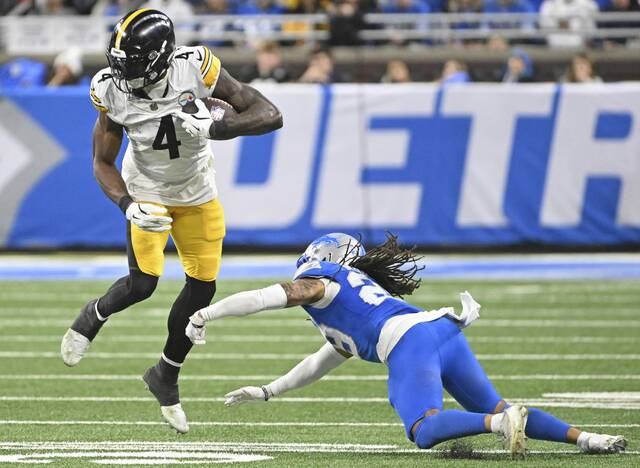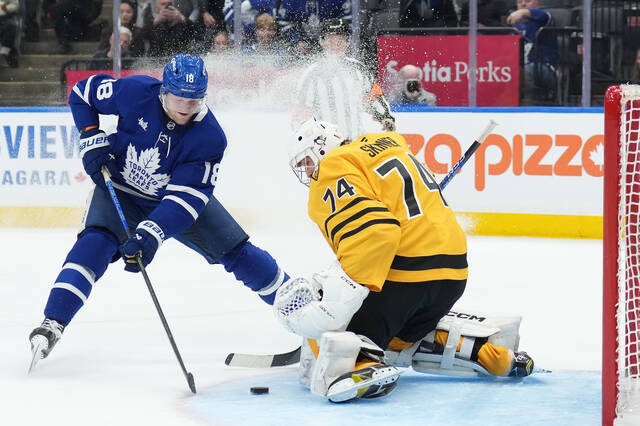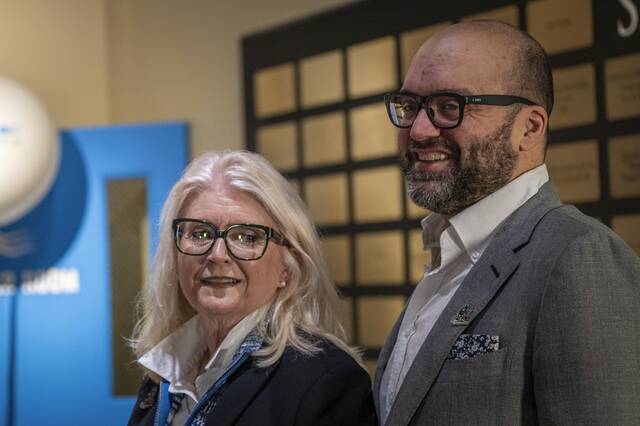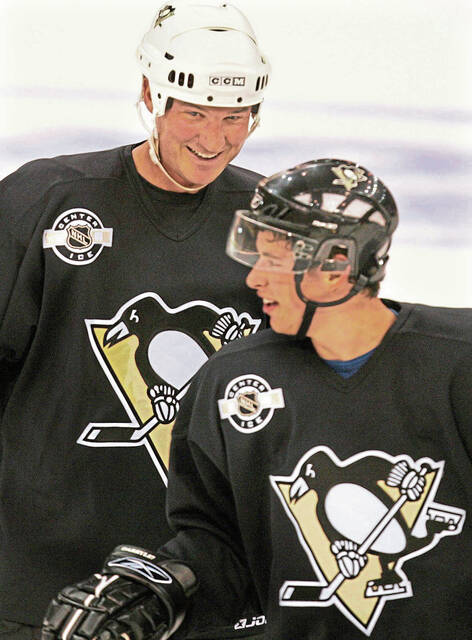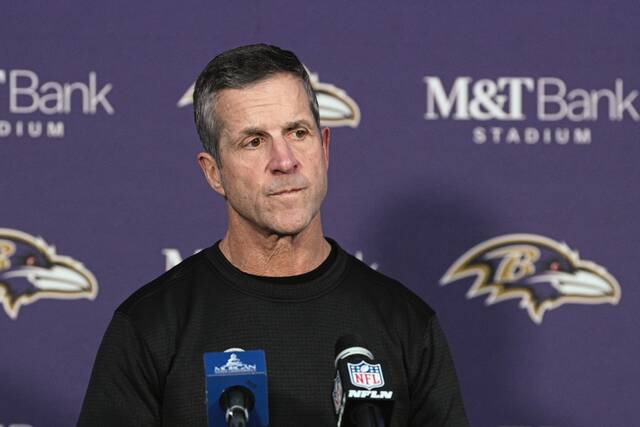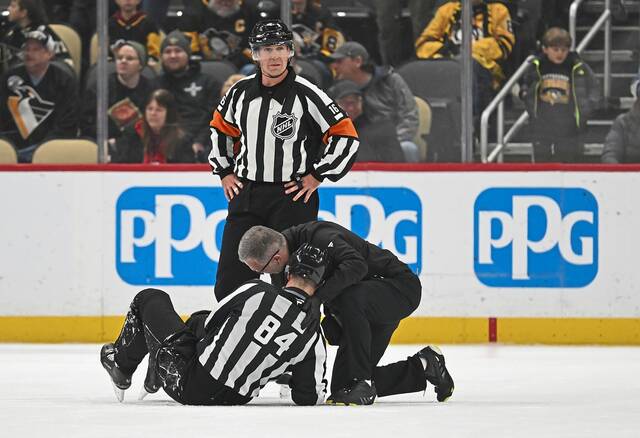In prevalent hockey cliche parlance, Thursday’s dud of a loss at Toronto was just “one of those nights” for the Pittsburgh Penguins, right?
After all, games such as the 4-0 defeat “happen sometimes,” especially after a magnificent 23-6-2 run. Remember, the Penguins had allowed only eight goals during a 4-0-1 stretch heading into Thursday, so it was surely just “the hockey gods” ordering up a 60-minute aberration in Ontario.
Right?
“We just haven’t been that good for a while,” defenseman Jack Johnson said Friday, “and I think it’s been like that for more than just a few games.”
OK, then. Tough room.
“In the 5-2 game that we won (at home against Toronto on Tuesday), we didn’t play that great, either,” Johnson said. “So I don’t think we were fooled by the score. We’ve been fooled by the score a lot lately.”
Even after Thursday’s listless loss, the Pen-guins trailed two of the NHL’s other 30 teams in points. Just three had allowed fewer goals.
Still, Penguins coach Mike Sullivan and many of his players say cracks in the facade have been showing for a while. Even if winning so much largely has masked issues, the Penguins know their defen-sive play must be crisper.
“We’ve talked about that as a team,” defenseman Marcus Pettersson said. “We all feel like the first part of the season when we had all the injuries, we kind of played hard and we knew what we had to do to win. And even if we have been winning some games lately, too, we feel like we haven’t played that sound defensive game that we want to.”
Over 18 games since Jan. 5, the Penguins allowed 32 shots on goal per game and were outshot by an average of more than four. The Penguins have fared even worse in shot attempts (including those blocked or missing the net), allowing about 55% and thereby attempting 45% of the shots taken in their past 18 games.
Johnson was correct in that during Tuesday’s win at home against the Maple Leafs, the Penguins allowed almost 57% of the shot attempts and 60% of the shots on goal. Thursday, according to naturalstattrick.com, the Penguins managed just four 5-on-5 “high-danger scoring chances” compared to Toronto’s 16.
Since Jan. 5, the Penguins have accounted for just 42.7% of the 5-on-5 high-danger scoring chances in their 18 games, the second-worst rate in the NHL over that time, per naturalstattrick.com.
“I don’t think it’s just necessarily the defensive zone (is the issue),” Sullivan said. “I think it’s the full rink. Our team’s at its best when we are defending up the ice with our puck pursuit and making it hard for teams to come through the neutral zone with any sort of speed or continuity, and I don’t think we have been as good in that regard.
“Territory for this team is important. Whether we are spending time in the offensive zone and whether we have the puck or we don’t, I think, is an indication we are on top of our game, and I don’t think we have controlled territory as much as we were capable of over the past few weeks.”
Pettersson’s theory that the perceived deficiencies are working in inverse proportion to the team’s health could have some credence. Earlier this week, Sullivan spoke about how the absence of top players sometimes causes a team to play a structured fundamental game.
Though the Penguins are 9-4-1 since Sidney Crosby returned from a two-month recovery from core-muscle surgery, they have been outshot significantly in that time (449-390 on goal, 674-557 in attempts) and allowed far more 5-on-5 high-danger chances (120) than they’ve generated (83). The latter rate (40.89%), per naturalstattrick.com, is second-worst in the NHL in that time.
Still, thanks in large part to strong goaltending, special teams and individual brilliance, the Penguins have stacked wins. Until Thursday. So maybe that game can be a wake-up call.
“We’d like to spend less time (in the defensive zone) and make sure we are not giving up the quality chances that we are,” Crosby said. “That just comes down to execution and work ethic there, and that’s something that we should be able to influence pretty quickly. With the importance of the games and defensive play being so important, that’s something that should get better.”






